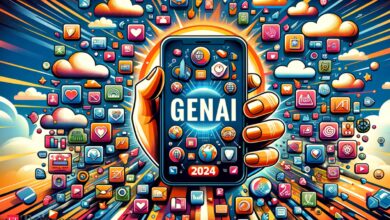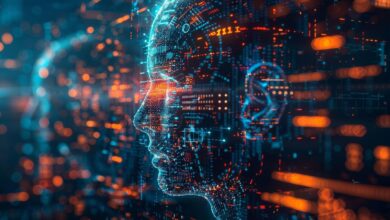Generative AI, the industrial revolution of our era

Simply said, generative AI is artificial intelligence technology that produces and processes many types of seemingly human-created content. This includes texts, images or even video and audio files. With new user interfaces that simplify using the tools, creating or editing text, making summaries, simplifying them or analysing long texts in just a few seconds, the use of generative AI has grown exponentially. We expect increasing impacts on business processes and the workforce as these tools gain wider adoption.
AI revolution
Many people think of the possibilities of AI as being parallel to the industrial revolution of the 1700s, which brought access to more energy to society by the invention of the steam engine. Soon steam engines were generating electricity and the new technologies were used for a wide range of purposes. Almost all aspects of people’s lives were affected, and societies became dependent on the technology. Are we entering a new stage of dependence on AI? The writer and historian Yuval Noah Harari argues that AI has hacked the operating system of human civilisation.
Creation
What sets generative AI apart from other types of AI is the ability to create new content. Other types of AI use various techniques to solve problems or make predictions based on patterns in a data set. An example is a streaming recommendation system that makes suggestions based on your viewing history. As for generative AI, ChatGPT is the most well-known generative AI tool that can produce a variety of outputs based on dialogue and a wide range of instructions. Bard (Google) and other initiatives are following suit, and they are becoming important within domains such as language, coding, imagery, graphics and videos.
Behind the engaging and user-friendly interface, there is a well-known technology: language models. Large language models can have billions or trillions of parameters, and these models are now becoming accessible in an entirely new way. The sudden success of large language models can be attributed to their usability, fun, accessibility, and adaptability.
The question is now what impact this technology will have on society more generally. In many ways it dramatically reduces the cost of writing text, and this is already noticeable in some professions.
The technology is already going into major search engines, such as Google and Bing.
This could have a more profound impact, as this technology will produce similar but not identical texts for each search. Content will be provided through a filter of somewhat unknown qualities. It is difficult to say how this will impact education, work and society at large.
Language models in Telenor
In Telenor Research & Innovation we are actively looking into the possibilities of generative AI, and we have worked on language models within the related field of speech recognition. To enable good transcriptions of recordings, we need a model that puts the phonetics into context.
There is a difference in meaning between “during the reign” and “during the rain” and we will typically need to know the context to distinguish between the two. For this, we need a model that will predict which is the correct word in that context. This technology is being generalised, so the tools can continue to write fluently on almost any cue.
In 2020, Telenor Research & Innovation delivered a proof of concept with a small sample of Telenor Norway’s customer service speech data, showing that it is possible to produce relatively good and meaningful transcriptions for challenging types of data. Our team continues to advise Telenor Norway on automated speech recognition (ASR) and text analytics solutions for automating and improving customer service. We now have language models in many different languages. We have also collaborated with the AI Lab at the Norwegian University of Science and Technology (NTNU) on projects related to language models.



